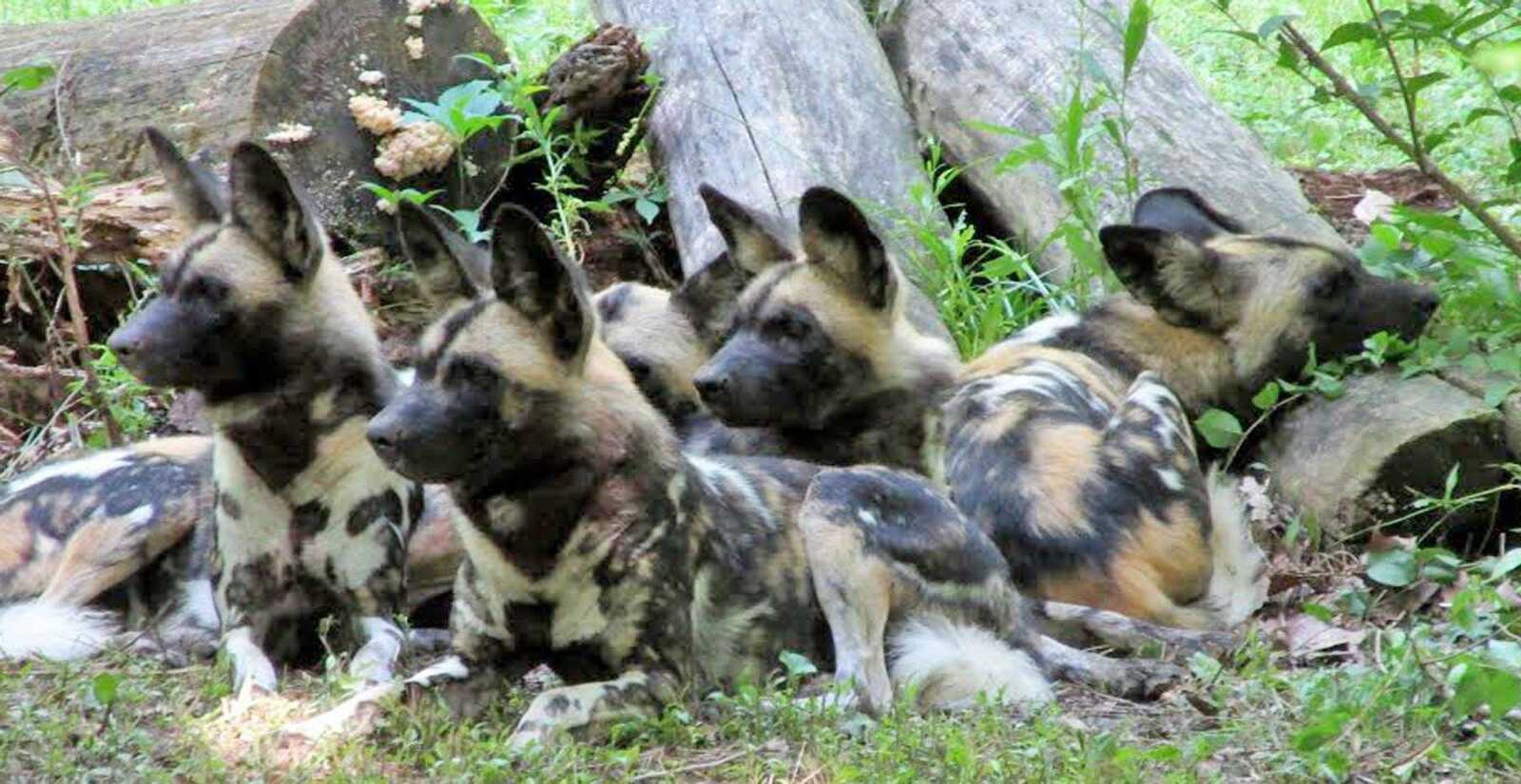Endangered Wolf Center adds endangered dog breed from Africa
ST. LOUIS -- A pack of five African wild dogs -- an endangered breed down to a few thousand in the wild -- has a new home in suburban St. Louis. The Endangered Wolf Center in Eureka has taken in the animals -- an adult male, an adult female and their three pups. They arrived May 24 from a small zoo in West Virginia...
ST. LOUIS -- A pack of five African wild dogs -- an endangered breed down to a few thousand in the wild -- has a new home in suburban St. Louis.
The Endangered Wolf Center in Eureka has taken in the animals -- an adult male, an adult female and their three pups. They arrived May 24 from a small zoo in West Virginia.
The center, whose mission is to preserve and protect wild canid species through managed breeding, reintroduction and education, is among 30 facilities around the world that together house 97 African wild dogs for breeding and species survival. A spokeswoman said the center will use the two adults for further breeding.
"This is an exciting time for the Endangered Wolf Center to be able to help preserve and exhibit these incredible animals," Virginia Busch, executive director of the Endangered Wolf Center, said in a statement. "They are inquisitive, playful and highly social, yet they have become endangered due to poaching, habitat loss, and disease."
Many conservationists, including those at the Endangered Wolf Center, are pushing a new name for the breed, African painted dogs. The goal is to dispel the myth that they are simply wild strays unworthy of protection.
Busch said the name African wild dogs "prompted much misunderstanding and fear and caused them to be targets of poisoning and hunting. Our goal is to educate the public on this distinctive and intriguing species."
The breed features big, round ears and a patchy white, yellow and black pelt. Its geographical range in Africa was reduced vastly over the decades as livestock owners and others killed them. The dogs hunt relentlessly as a pack in the wild, sometimes exhausting their prey in the chase and even learning to use fences to corral animals.
"It's such a successful animal in the wild that it was highly persecuted for a long time all through Africa," Kevin MacFarlane, reserve manager at Limpopo-Lipadi, a private game reserve in southeast Botswana, told The Associated Press earlier this year.
Africa has between 6,000 and 7,000 African wild dogs, with about half living in Botswana, a southern African country. Others in the wild are in Zambia, Tanzania, South Africa, Zimbabwe, Senegal, Namibia and Kenya, the Endangered Wolf Center said.
The dogs' large ears help them dissipate heat, the center said. Each animal's coat is unique, so the dogs can recognize each other from distances as great as a football field. They can run up to nearly 40 mph and can run down prey including gazelles, antelope, impala, kudu and wildebeest.
In Eureka, the dogs can be viewed by the public in person or via webcams accessible at endangeredwolfcenter.org/webcams/.
Connect with the Southeast Missourian Newsroom:
For corrections to this story or other insights for the editor, click here. To submit a letter to the editor, click here. To learn about the Southeast Missourian’s AI Policy, click here.









